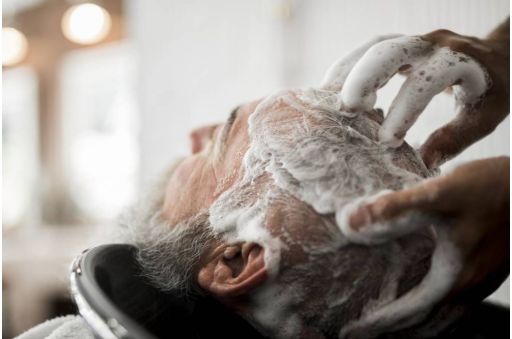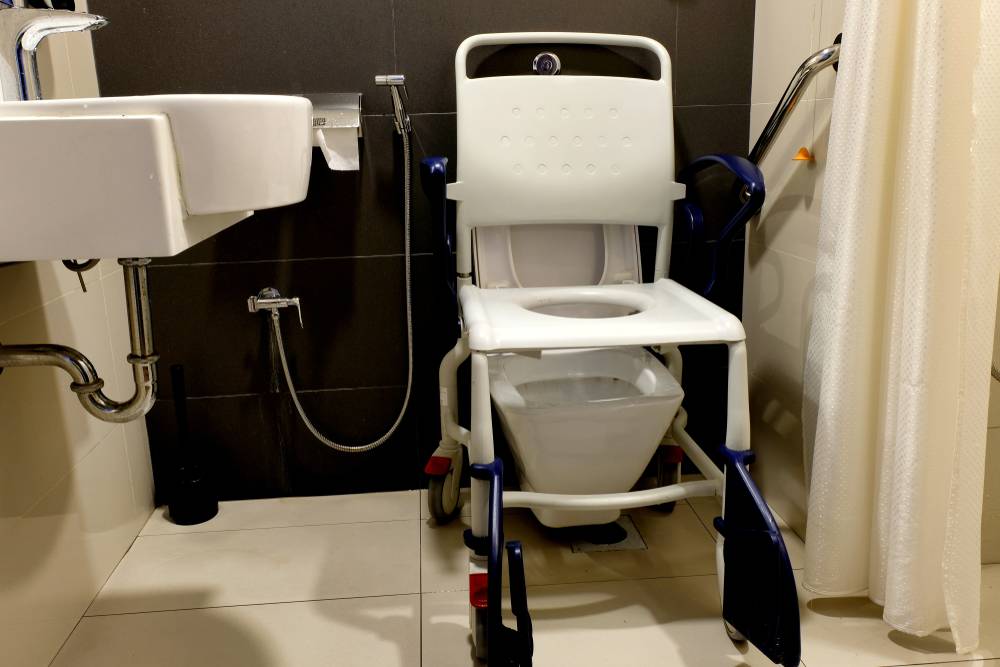
How to Wash Someone's Hair in a Wheelchair
Proper hair hygiene is something that people with disabilities do really need to maintain their well-being and dignity. There are some tricks to help caregivers wash someone’s hair in a wheelchair to make this process easier and stress-free for both sides. This comprehensive guide is created to save you time and effort. Let’s turn this everyday routine into an easy task for those who have just started caring for a person with disabilities.
Prepare the Environment
Before you start washing someone's hair in a wheelchair for indoor use, provide a safe and comfortable place for doing the routine work. Collect all the bare essentials you'll need to wash their hair. These include a mild shampoo and conditioner that are suitable for the individual's hair type. Grab some clean towels, ideally a big one that can cover a head with wet hair. Also, consider a waterproof cape or gown so the water won't wet the clothes. Tuck towels around the neck and shoulders to absorb any excess moisture coming out from the sink. Place a pitcher or detachable showerhead at hand, as they will come in handy while rinsing.
The place where you are going to wash someone's hair must provide ample space for maneuvering the wheelchair. This will ease your work while getting around the person, plus a roomy bathroom minimizes the risk of slips and falls. The bathroom or a bedroom with hardwood or tile flooring are ideal options to consider. Place a non-slip rug nearby for better stability, but make sure it is safely secured so the wheelchair won't trip over. There should be enough lighting in the bathing area to minimize strain on the caregiver's eyes and ensure the individual’s hair will be carefully washed.
Proper ventilation prevents humidity buildup in the bathroom and minimizes the risk of respiratory diseases. Open windows or use exhaust fans to provide solid airflow. Air out the room every time after washing to reduce the spread of mold. Consider investing in water-absorbent mats or towels to lay on the floor. These add-ons will protect surrounding surfaces from water spillage. Place them directly around the wheelchair's wheels.
Once you bring the person with limited mobility to a bathroom, lock the wheelchair brakes to make sure the person sits still. Adjust the height of the wheeling chair and recline the back if needed for optimal access and comfort. There is a shower chair or a bench specially designed for people with disabilities to use while bathing, so you don’t need to wet a wheeling chair.
The Hair Washing Process - Step by Step
The process of washing someone’s hair in a wheelchair requires gentle technique and attention to detail. Pull the wheeling chair back to the sink so the head can reach a basin like in a salon. Alternatively, you can find a floated shampoo basin on the internet that is wheelchair-friendly. The inflatable 'device' helps to keep water in while washing. In case the person can't bend the neck, look for a hair washing tray or shampoo funnel. Think about which is the better way to wash hair and scalp.
Wet their hair thoroughly with warm water - every strand must be saturated. A pitcher or detachable showerhead will help you direct the water flow so you can control the washing process and not get fully wet. Avoid excessive splashing or water in the eyes or ears.
Once the hair is sufficiently wet, apply a generous amount of shampoo. Then, gently massage the product into the scalp and apply it throughout all the length of the hair. Different hair types may require slightly modified hair-washing techniques. For those with coarse or tightly coiled textures, use a moderate scrubbing motion with your fingertips to work the shampoo through the strands. For those with fine or delicate hair, opt for a lighter touch by gently massaging the shampoo to avoid unnecessary breakage.
After you’re done shampooing, carefully rinse away all traces of the product. The remained residue may lead to dryness, itching, and potential scalp irritation. A steady stream of water will help you get rid of all the shampoo. Work with your fingers methodically from the scalp outward.
Next goes the conditioner. Apply the product while focusing on the mid-lengths and ends of the hair. Do not use conditioner on the scalp. If the person has drier or more brittle hair, leave the product on for a few extra minutes to maximize the hydration effect. Distribute the conditioner evenly all over the lower part of the hair length. It’s not recommended to comb the hair at this stage as the wet hair is prone to falling out while combing.
Rinse out the conditioner once the product has had sufficient time to penetrate. Water the hair thoroughly to prevent product buildup and emerging unnecessary tangles.
Then, towel dry the hair. Consider a soft, absorbent towel. It will blot away excess moisture from the head. Avoid vigorously rubbing or twisting the hair, as this may lead to breakage and frizz. The time needed to wear a towel turban to absorb moisture depends on the hair type and its length.

The standard procedure is to use a blow dryer to speed up the drying process. Avoid excessive heat from the device. Do not hold the dryer in one place for long periods. Move your arm all over the hair length, going from up to down. Prolonged exposure can lead to dryness and hair damage.
Adjust the temperature so the person in a wheelchair feels comfortable. Use a diffuser attachment for added control and gentleness. For those who have short hair, you can opt out of using a blow dryer. But make sure they do not go to sleep with wet hair. The hair must be dried till bedtime, whether with the help of a dryer or not.
The techniques for styling may vary depending on the individual's hair type and preferences. To detangle the curly hair, get a wide-tooth comb or your fingers. Use a detangler if needed. Apply a leave-in conditioner or styling cream. This will enhance moisture and manageability.
Individuals with straight hair may benefit from a smoothing serum or lightweight oil to tame flyaways and add shine. For those with thin or fragile hair, minimize excessive manipulation. Consider loosely braiding or gently twisting the strands to prevent unnecessary breakage.
When the hair is completely dry, pay special attention to tangles and knots. These should be handled with patience and care. Always start from the ends and work upward. Avoid excessive pulling or tugging, which can cause discomfort and further damage to the hair.
Create a Positive Experience While Doing Routine Work
While washing someone in a wheelchair, provide a friendly environment. Consider involving the individual in a dialog - ask what can help them feel safe and comfortable. Respect for personal preferences is equally crucial, whether it involves adjusting water temperature, product choices, or styling techniques.
At the same time, involve praise and encouragement, and be thankful for the person’s patience and cooperation. These small gestures of kindness and empathy can transform a routine task into a meaningful moment between you two. Small talk can also make the time go faster. Such little additions can awaken a feeling of dignity for those in your care.
Conclusion
Providing exceptional hair care for individuals confined to wheelchairs requires a harmonious blend of technical skill, attentive preparation, and genuine compassion. Follow the above guidelines to elevate a seemingly routine task into an enriching experience that fosters self-esteem and overall well-being.

